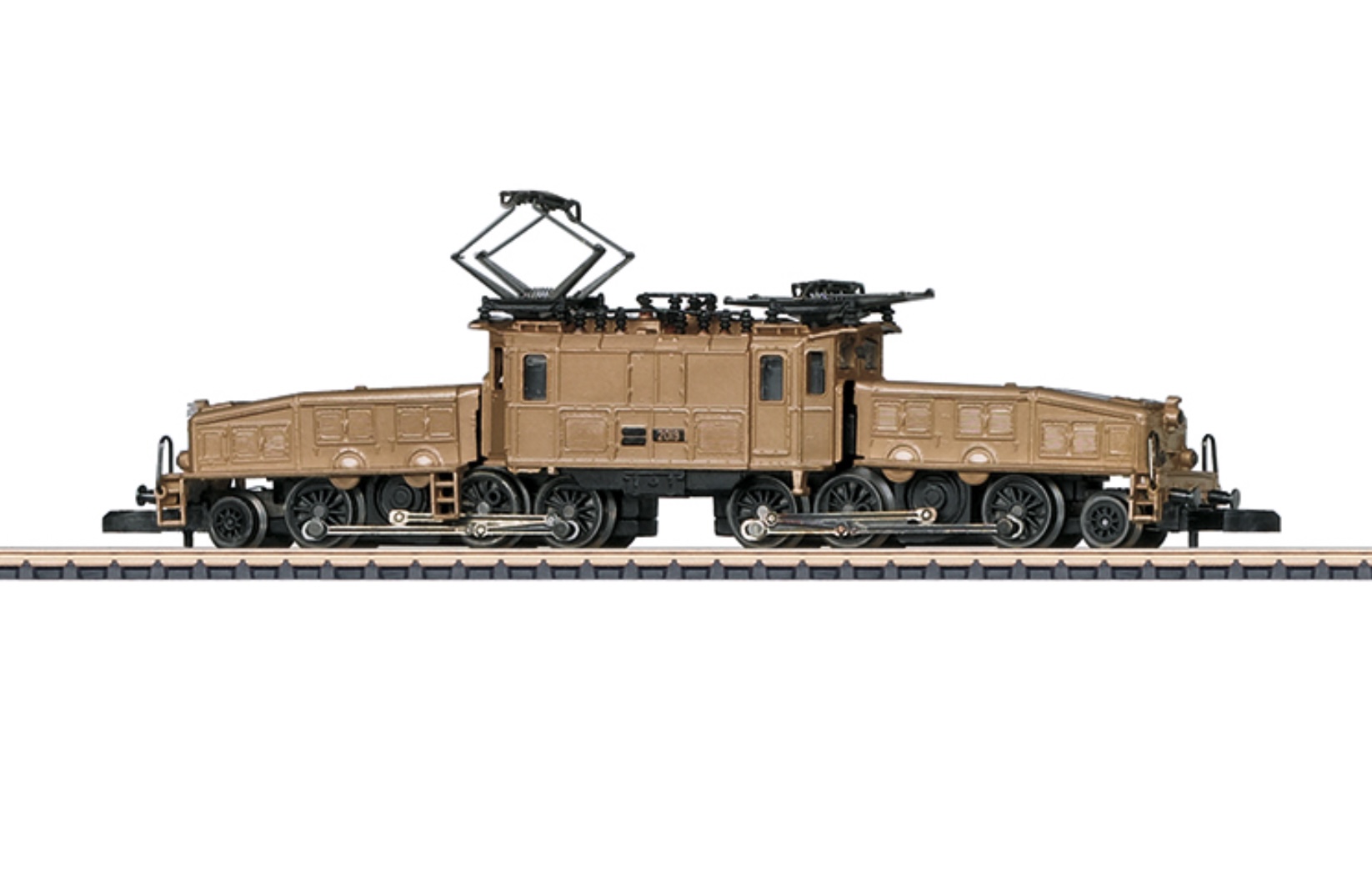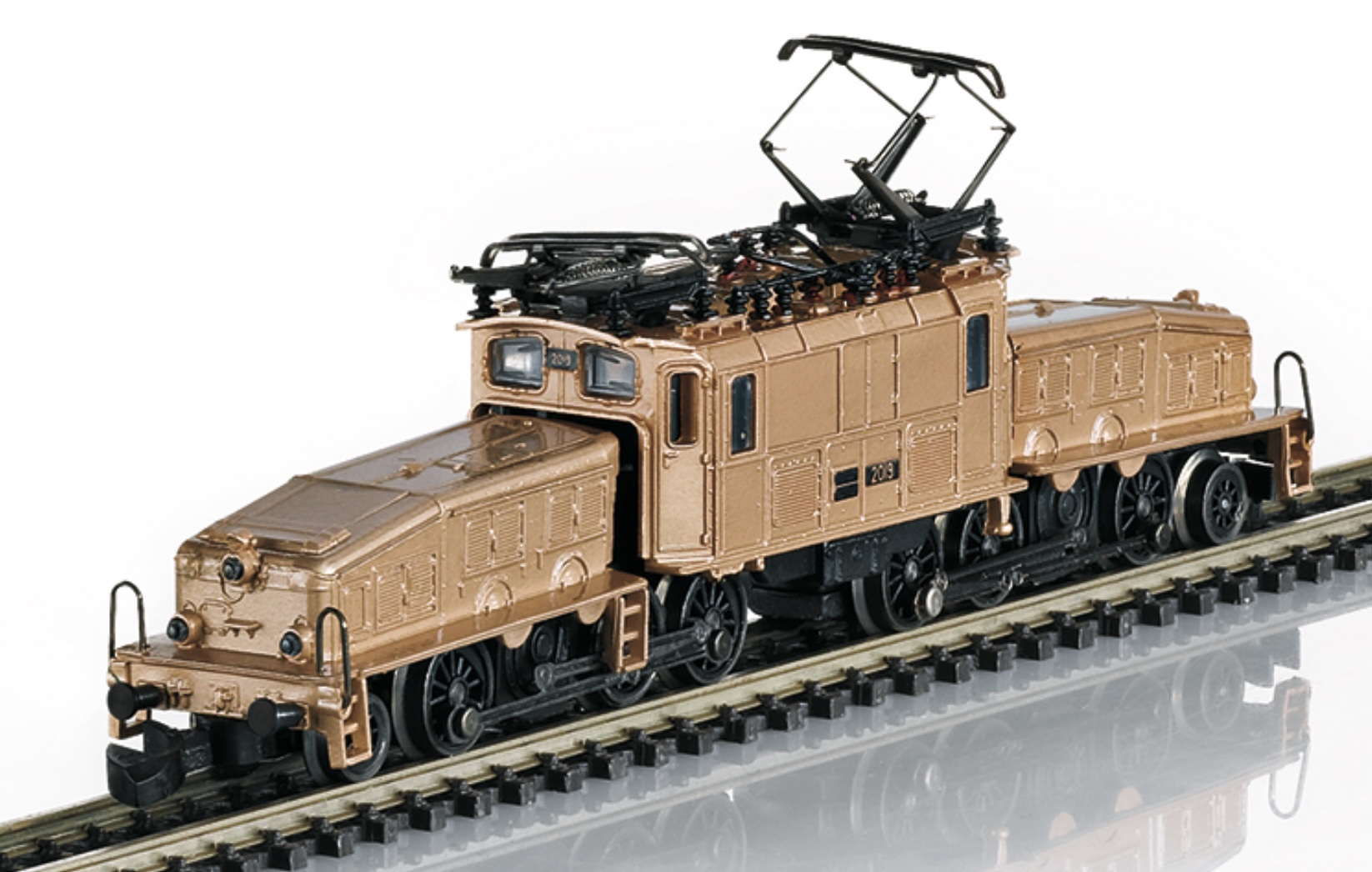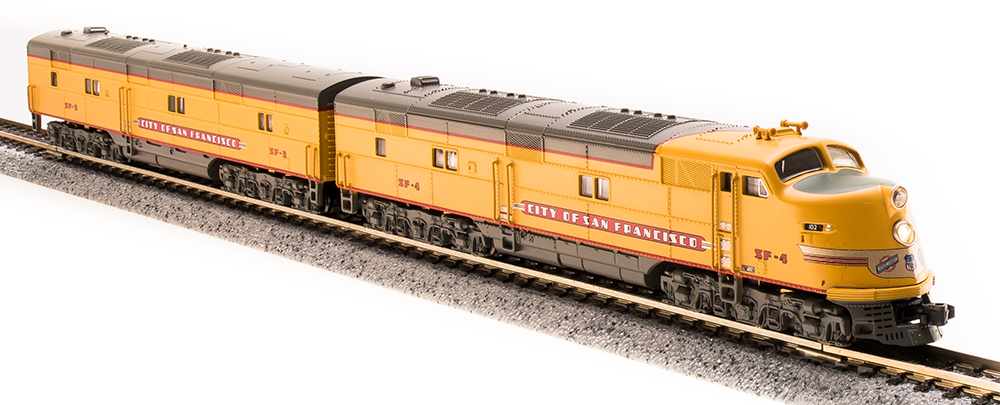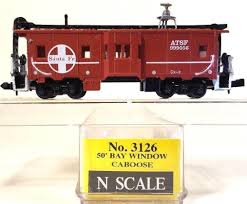Specific Item Information: SBB Historic class Ce 6/8 III, road number 14305, as it looked before 2017. The prototype is still currently operational on the roster of SBB Historic at Erstfeld, Switzerland.
The hoods and locomotive body are constructed of real die-cast bronze and have a transparent protective coating. The locomotive has a finely balanced color design with bronze and black tones. It has a motor with a bell-shaped armature and LED lighting with the Swiss headlight / marker light code. Both trucks powered. The locomotive has reduced lettering for the benefit of the bronze look. Length over the buffers 91 mm / 3-9/16". The locomotive comes in special fine packaging.
The hoods and locomotive body are constructed of real die-cast bronze and have a transparent protective coating. The locomotive has a finely balanced color design with bronze and black tones. It has a motor with a bell-shaped armature and LED lighting with the Swiss headlight / marker light code. Both trucks powered. The locomotive has reduced lettering for the benefit of the bronze look. Length over the buffers 91 mm / 3-9/16". The locomotive comes in special fine packaging.
Prototype History: Crocodile (German Krokodil) electric locomotives are so called because they have long "noses" at each end, reminiscent of the snout of a crocodile (see also Steeplecab). These contain the motors and drive axles, and are connected by an articulated center section. The center section usually contains the crew compartments, pantographs and transformer.
A prototype locomotive, SBB-CFF-FFS Ce 6/8 I number 14201, was ordered in June 1917. The production "Crocodiles" were the series SBB Ce 6/8 II and SBB Ce 6/8 III locomotives of the SBB, Swiss Federal Railways, built between 1919 and 1927. There were 33 class Ce 6/8 II and 18 class Ce 6/8 III, making a total (excluding the prototype) of 51 locomotives. These locomotives were developed for pulling heavy goods trains on the steep tracks of the Gotthardbahn from Lucerne to Chiasso, including the Gotthard Tunnel.
The electric motors available at the time were large and had to be body-mounted above the plane of the axles, but flexibility was required to negotiate the tight curves on the Alpine routes and tunnels. An articulated design, with two powered nose units bridged with a pivoting center section containing cabs and the heavy transformer, met both requirements and gave excellent visibility from driving cabs mounted safely away from any collision. The two motors in each nose unit were geared to a jackshaft between the drive axles farthest from the cab, with side rods carrying the power to the drivers. These locomotives, sometimes called the "Swiss Crocodile" or "SBB Crocodile", were highly successful and served until the 1980s. Märklin published a book about their history in 1984. Several are still in operation as preserved historical locomotives.
From Wikipedia
A prototype locomotive, SBB-CFF-FFS Ce 6/8 I number 14201, was ordered in June 1917. The production "Crocodiles" were the series SBB Ce 6/8 II and SBB Ce 6/8 III locomotives of the SBB, Swiss Federal Railways, built between 1919 and 1927. There were 33 class Ce 6/8 II and 18 class Ce 6/8 III, making a total (excluding the prototype) of 51 locomotives. These locomotives were developed for pulling heavy goods trains on the steep tracks of the Gotthardbahn from Lucerne to Chiasso, including the Gotthard Tunnel.
The electric motors available at the time were large and had to be body-mounted above the plane of the axles, but flexibility was required to negotiate the tight curves on the Alpine routes and tunnels. An articulated design, with two powered nose units bridged with a pivoting center section containing cabs and the heavy transformer, met both requirements and gave excellent visibility from driving cabs mounted safely away from any collision. The two motors in each nose unit were geared to a jackshaft between the drive axles farthest from the cab, with side rods carrying the power to the drivers. These locomotives, sometimes called the "Swiss Crocodile" or "SBB Crocodile", were highly successful and served until the 1980s. Märklin published a book about their history in 1984. Several are still in operation as preserved historical locomotives.
From Wikipedia
Road Name History: Swiss Federal Railways (German: Schweizerische Bundesbahnen (SBB), French: Chemins de fer fédéraux suisses (CFF), Italian: Ferrovie federali svizzere (FFS)) is the national railway company of Switzerland. It is usually referred to by the initials of its German, French and Italian names, either concatenated as SBB CFF FFS, or used separately.
The company is headquartered in Bern.
Read more on Wikipedia.
The company is headquartered in Bern.
Read more on Wikipedia.
Brand/Importer Information:  Gebr. Märklin & Cie. GmbH or Märklin (MÄRKLIN or MAERKLIN in capital letters) is a German toy company. The company was founded in 1859 and is based at Göppingen in Baden-Württemberg. Although it originally specialized in doll house accessories, today it is best known for model railways and technical toys. In some parts of Germany and in Sweden, the company's name is almost synonymous with model railroads.
Gebr. Märklin & Cie. GmbH or Märklin (MÄRKLIN or MAERKLIN in capital letters) is a German toy company. The company was founded in 1859 and is based at Göppingen in Baden-Württemberg. Although it originally specialized in doll house accessories, today it is best known for model railways and technical toys. In some parts of Germany and in Sweden, the company's name is almost synonymous with model railroads.
Märklin introduced Z Scale in 1972. Connoisseurs appreciate Märklin Z as much as the most inveterate modeler: The charm of these finely constructed gems is best seen in the smallest of space. Because, this scale with all kinds of precision translated into 1:220 scale awaits you with almost unlimited operating enjoyment. It doesn't get any better.

Märklin introduced Z Scale in 1972. Connoisseurs appreciate Märklin Z as much as the most inveterate modeler: The charm of these finely constructed gems is best seen in the smallest of space. Because, this scale with all kinds of precision translated into 1:220 scale awaits you with almost unlimited operating enjoyment. It doesn't get any better.
Item created by: CNW400 on 2022-09-21 10:45:32. Last edited by CNW400 on 2023-01-17 15:43:19
If you see errors or missing data in this entry, please feel free to log in and edit it. Anyone with a Gmail account can log in instantly.
If you see errors or missing data in this entry, please feel free to log in and edit it. Anyone with a Gmail account can log in instantly.










